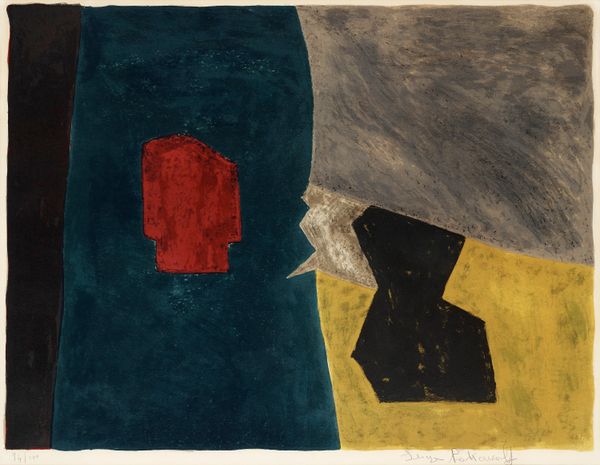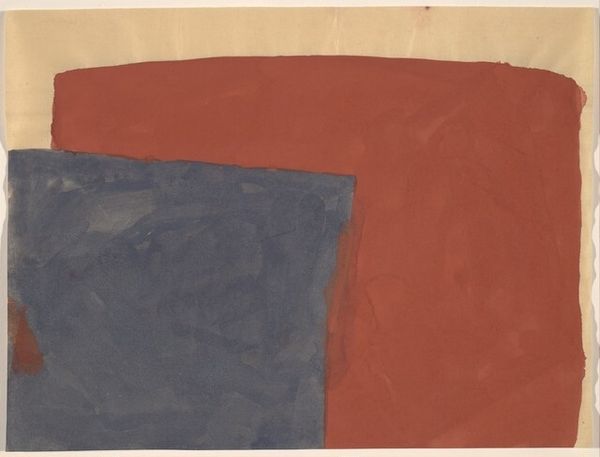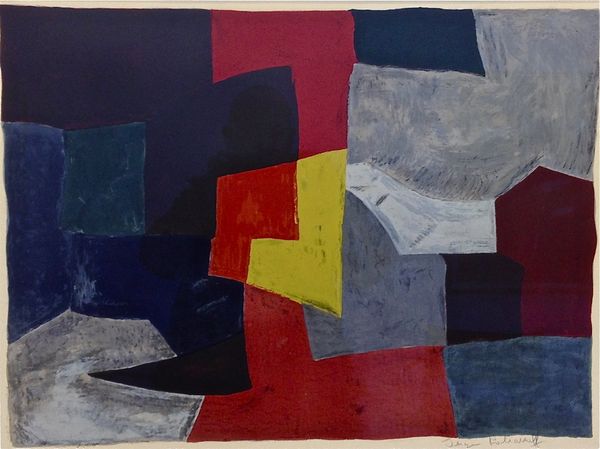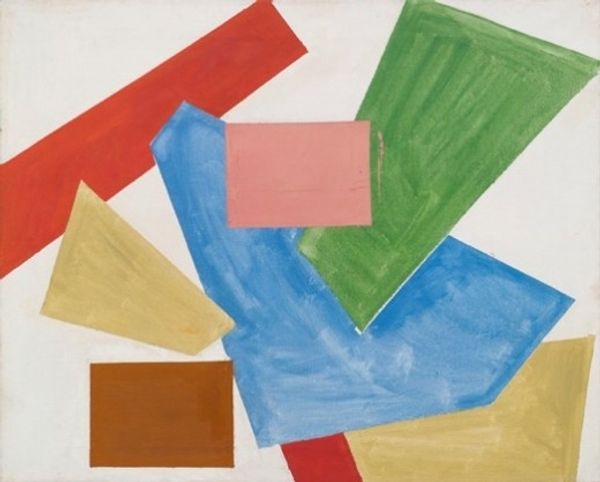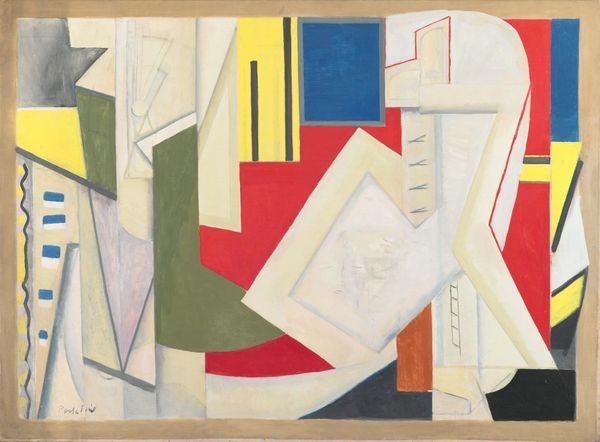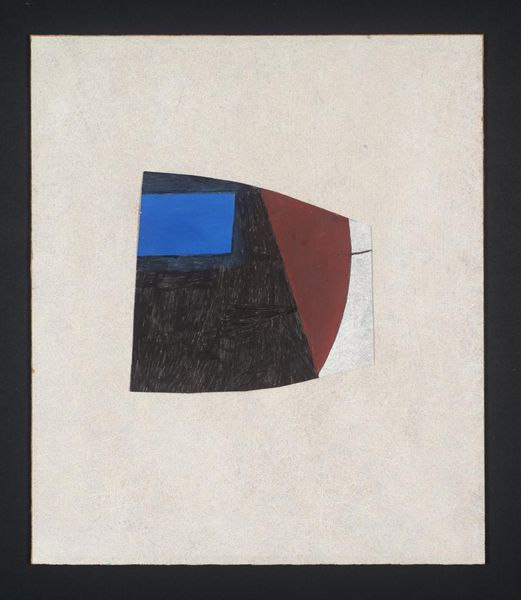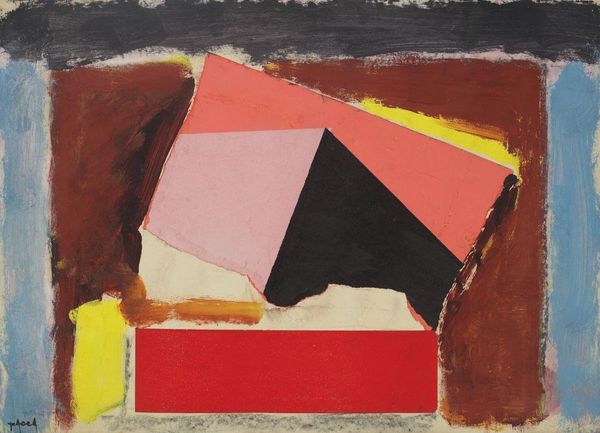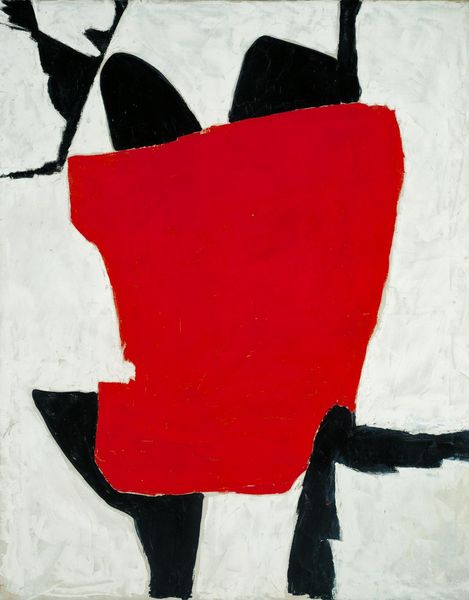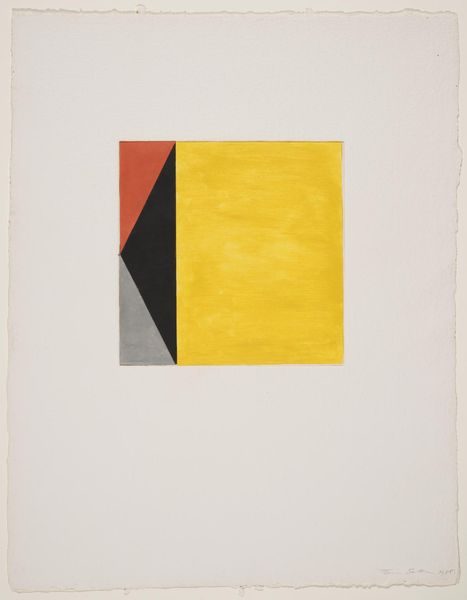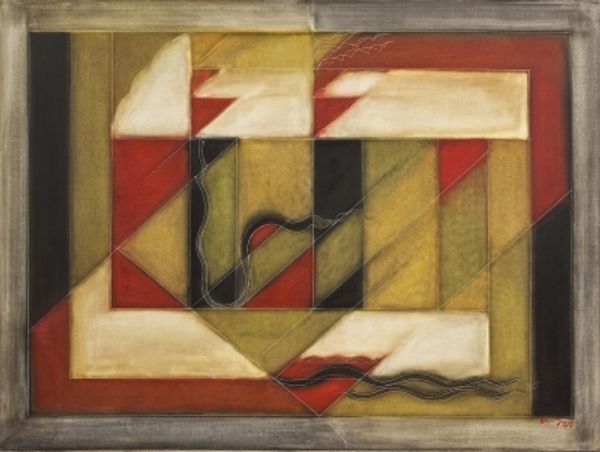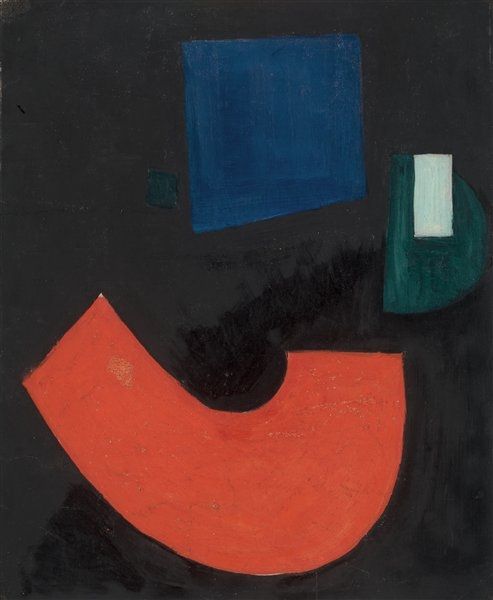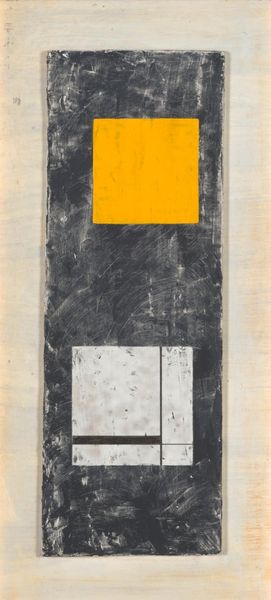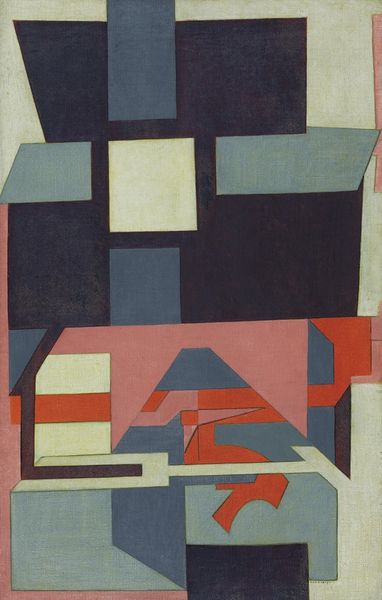
Dimensions: frame: 376 x 452 x 55 mm support: 340 x 419 mm
Copyright: © The Barns-Graham Charitable Trust | CC-BY-NC-ND 4.0 DEED, Photo: Tate
Editor: This is Wilhelmina Barns-Graham's "Red Form," with no specific date, housed here at the Tate St Ives. It strikes me as a bold yet somewhat tentative composition. How do you interpret this work, considering the art world's reception of female abstract artists at the time? Curator: Barns-Graham was working in a period where abstraction was gaining traction, but female artists often faced marginalization. This piece, with its confident use of colour and geometric forms, challenges the male-dominated narrative of abstract expressionism. Do you think its title helps or hinders our understanding? Editor: That's a great question. "Red Form" feels quite literal, but perhaps that simplicity is a statement in itself, a rejection of grand narratives? Curator: Precisely. In the context of post-war Britain, artists were grappling with new forms of expression. Abstraction became a language to articulate experiences beyond traditional representation. Considering the social and political climate, Barns-Graham's choice of abstraction becomes a powerful act. Editor: I see what you mean. Thank you for providing the historical context! It definitely gives me a fresh perspective. Curator: My pleasure! It's crucial to consider how social forces shape both the creation and reception of art.
Comments
Join the conversation
Join millions of artists and users on Artera today and experience the ultimate creative platform.
tate 7 months ago
⋮
Born in St Andrews, Wilhelmina Barns-Graham visited Paris and Rouen as a teenager. She studied painting at Edinburgh College of Art between 1932 and 1936, and in 1940 moved to St Ives in Cornwall, on the recommendation of an artist friend, Margaret Mellis. There she got to know Ben Nicholson, Barbara Hepworth, Bernard Leach and Naum Gabo. The economy of Gabo's sculptural shapes and the transluency of the modern materials he used had a great impact on her. 'Red Form' was painted in her St Ives studio by Porthmeor beach, and reflects the interest she took at the time in the Golden Section. Gallery label, September 2004
